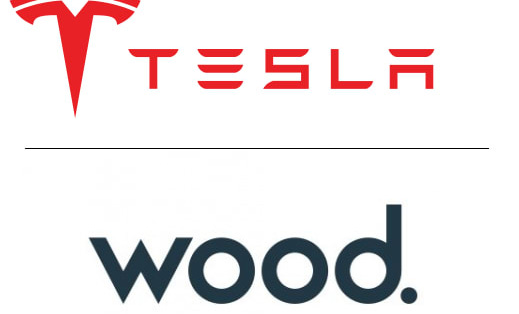Weekly Bulletin #35
Inflation Peak? | CVR Spin-Off Situation | Redemption Opportunity
Disclaimer
Value Situations is NOT investment advice and the author is not an investment advisor.
All content on this website and in the newsletter, and all other communication and correspondence from its author, is for informational and educational purposes only and should not in any circumstances, whether express or implied, be considered to be advice of an investment, legal or any other nature. Please carry out your own research and due diligence.
Inflation Peak?
The latest US inflation reading reported that inflation had “cooled” to 7.7% in October, down from 8.2% in September, continuing an apparent decelerating trend from the 9.1% peak reading reached in June. This has lead to some commentators suggesting that inflation has now peaked. I think this interpretation may be a little hasty however, and I’m minded to think of how inflation behaved through the 1970s period, which is perhaps the most analogous to today’s market environment, given the parallels in energy markets and inflation generally.
The chart below puts this year’s average YTD inflation rate of ~8.3% in perspective, with inflation currently the highest its been since 1980:
Source: Federal Reserve Bank of St. Louis; US Bureau of Labor Statistics.
Looking at the chart prompts me again to think back to Luke Gromen’s comments earlier this year about a second wave of inflation, given the continued supply constraints of key commodities, particularly energy in Europe. Indeed, despite the recent cooling of the US inflation rate, inflation in Europe remains elevated at ~10%, and the European manufacturing base is seemingly going into reverse with major chemical and other industrial businesses shutting down operations (in some instances permanently) as they cannot operate economically with structurally higher costs.
The risk here is that the energy crisis in Europe, which is likely to persist for several more years, may lead to wider deindustrialisation which would be highly inflationary - reduced output means reduced supply of products across a range of essential sectors, such as chemicals and the food supply chain. How is this relevant to the US, where energy costs and inflation are trending lower? In such a scenario, given the global importance of Europe’s manufacturing base and exports, this reduced output of essential goods would likely drive a renewed increase in the US rate of inflation.
Coming back to the 1970s as an analogue to today’s inflationary environment, overlaying the US inflation rate’s recent trajectory against that of the 1970s produces an uncomfortable picture:
Source: Value Situations analysis.
Inflation reached an apparent peak of 11.1% in 1974, then declined all the way down to 5.74% in 1976 before ultimately peaking at 13.6% four years later in 1980. The fit of today’s inflation rate trajectory with the 1970s experience is striking - if today’s market is to rhyme with history this suggests a second, even stronger wave of inflation may lie ahead.
Armed with this perspective, I can’t help but think that recent peak inflation calls may prove to be wishful thinking. To be clear, this is not intended as a prediction, but rather an observation from market history that is worth bearing in mind for 2023.
CVR Spin-Off Situation
An interesting equity situation that caught my eye recently was the news that CVR Energy (CVI) is exploring the possible spin-off of its nitrogen fertilizer business, which comprises its interest in related entity CVR Partners LP (UAN).
By way of background, CVI is a US-based fuel refining and renewables business that is controlled by Carl Icahn, whose Icahn Enterprises LP entity owns ~71% of CVI. In turn, CVI is the general partner and owns ~37% of UAN, which is a publicly listed limited partnership that produces and sells nitrogen fertilizer products in the US.
Nitrogen fertiliser producers predominantly use natural gas as their primary feedstock, with natural gas typically accounting for ~80% of the total cost of production. However, UAN is somewhat unique in that it produces fertiliser using petroleum coke (or “pet coke”) sourced from CVR, and is the only fertiliser producer in the US that uses pet coke. This has proven to be an operating advantage for UAN over the last 12 months in two respects: (1) It is not reliant on natural gas for production, which has surged in price this year, and (2) it has a secure supply of essential feedstock from CVR, and so does not face the same security of supply issues as competitors using natural gas.
Additionally, it is not only UAN’s feedstock/production advantage that make it interesting. UAN is structured as a publicly-traded master limited partnership (MLP) that pays out the majority of its cash-flows to its unit holders (analogous to shareholders). With fertiliser prices soaring this year due to tight supply and higher feedstock costs, UAN has generated super-normal cash-flow which it has been paying out to unitholders - over the LTM period, UAN has distributed ~$19+/unit, which equates to an LTM dividend yield of 17%+ at the current unit price. With a supportive outlook for energy and fertiliser prices over the next 12 months, due to tight supply, high food/crop prices and continued disruption to food and energy markets following Russia’s invasion of Ukraine, it is very plausible that UAN will continue to generate an inflation-beating double-digit cash yield. So on a fundamental basis, UAN appears to be a very attractive asset.
Moving onto the spin transaction, CVR is considering spinning off its general partner interest and its ~37% common unit holding in UAN into a new, publicly-listed holding company. This creates some interesting, value-accretive possibilities:
Firstly, it should simplify investing in UAN’s business, which given its MLP structure has certain tax implications that make owning MLP units more complex and therefore less attractive for some investors compared to conventional C-corporations in the US.
Secondly, the new spinco structure may enhance the possibility of UAN being involved in an M&A situation given the positive fundamentals for the fertiliser industry - I think there is a decent probability of something happening here given Carl Icahn’s involvement, with a take-out by the new holdco of the remaining ~63% of UAN’s listed units not held by CVR being the obvious first step in advance of a larger, possibly transformative transaction.
Finally, the spin would create a pure-play fertiliser business which combined with a cleaner holdco structure (vs. MLP) may enhance liquidity and price discovery, particularly if the spinco acquires the remaining 63% of UAN.
The CVR/UAN situation is one worth monitoring.
Redemption Opportunity
The news last week that Blackstone’s BREIT vehicle was limiting investor withdrawals due to a surge in redemption requests has come at the same time as reports that hedge funds are also experiencing high levels of investor redemptions. In the case of hedge funds, these requests have been attributed to a combination of overallocation to alternative investments during the previous low interest rate era and poor performance this year. Among hedge funds Tiger Global is perhaps the exemplar with regard to performance, having returned -54.6% YTD in its main hedge fund, while also marking down the value of private investments held in its venture unit by -24%.
Such redemption requests of this scale often result in forced selling by funds of their most liquid assets (usually equities) to meet investor liquidity requests. In addition to this, tax-loss harvesting will likely add to selling pressure in equities through to year-end - I expect there’ll be plenty to harvest in a year where the S&P 500 and the NASDAQ are running at returns of -17% and -30% respectively.
Mulling all this over, I am reminded of something Seth Klarman of the Baupost Group once said:
“Always look for forced urgent selling. When people give away stocks based on forced selling, or fear, that is usually a great opportunity.”
Given the poor performance across public and private markets generally this year, there is clearly the potential for very significant capital calls and a wave of forced selling into year-end in my view, and the Blackstone and Tiger Global episodes are visible evidence of this so far.
There is a positive flipside to this for well capitalised and patient investors however; as Klarman notes, such forced selling could provide some very attractive entry points for equity investors entering 2023.
Any Other Business
For this week’s AOB I’m sharing an interesting Bloomberg Wealth feature on the ruling royal family of Abu Dhabi, the Al Nahyan family.
The UAE accounts for ~6% of the world’s proven oil reserves, and with the prospect of structurally higher oil prices following this year’s energy crisis it can be reasonably expected that regional wealth will grow further in the coming years.
This presents an interesting thought - cash-rich Middle Eastern investors (both ruling families and sovereign funds) could emerge as an increasingly active acquirer class for Western companies and assets, as they look to diversify their economies and portfolios. The Al Nayhan’s eclectic mix of assets including Manchester City Football Club, European real estate, and an investment in Elon Musk’s SpaceX indicate the appetite for such assets is there. This may well provide opportunities for public equity investors focused on takeover situations the US and Europe in 2023.
Why Not Subscribe to the Paid Tier?
If you find the ideas in this newsletter interesting, please consider signing up to the Paid Tier.
You can read more about the paid offering here.
This newsletter is 100% reader supported and free from conflicts of interest or other commercial considerations. In writing Value Situations my job is essentially to generate ideas for subscribers that supplements their own idea origination process.
Furthermore, I believe the value proposition for paying subscribers is compelling. I am a former private equity/special sits investor that has worked with one of the largest alternative investment firms in the world, and so paying subscribers will be getting thoughtful, buy-side quality ideas and analysis for a very small fraction of the cost of employing a buy-side analyst full-time.
If you find this newsletter interesting, please also consider sharing it with friends and colleagues by clicking the Share button below.
Here’s what other investors are saying about Value Situations:






Value Situations was named as one of the Top 100 Must Follow Stock Research accounts by Edwin Dorsey of The Bear Cave Newsletter:

















